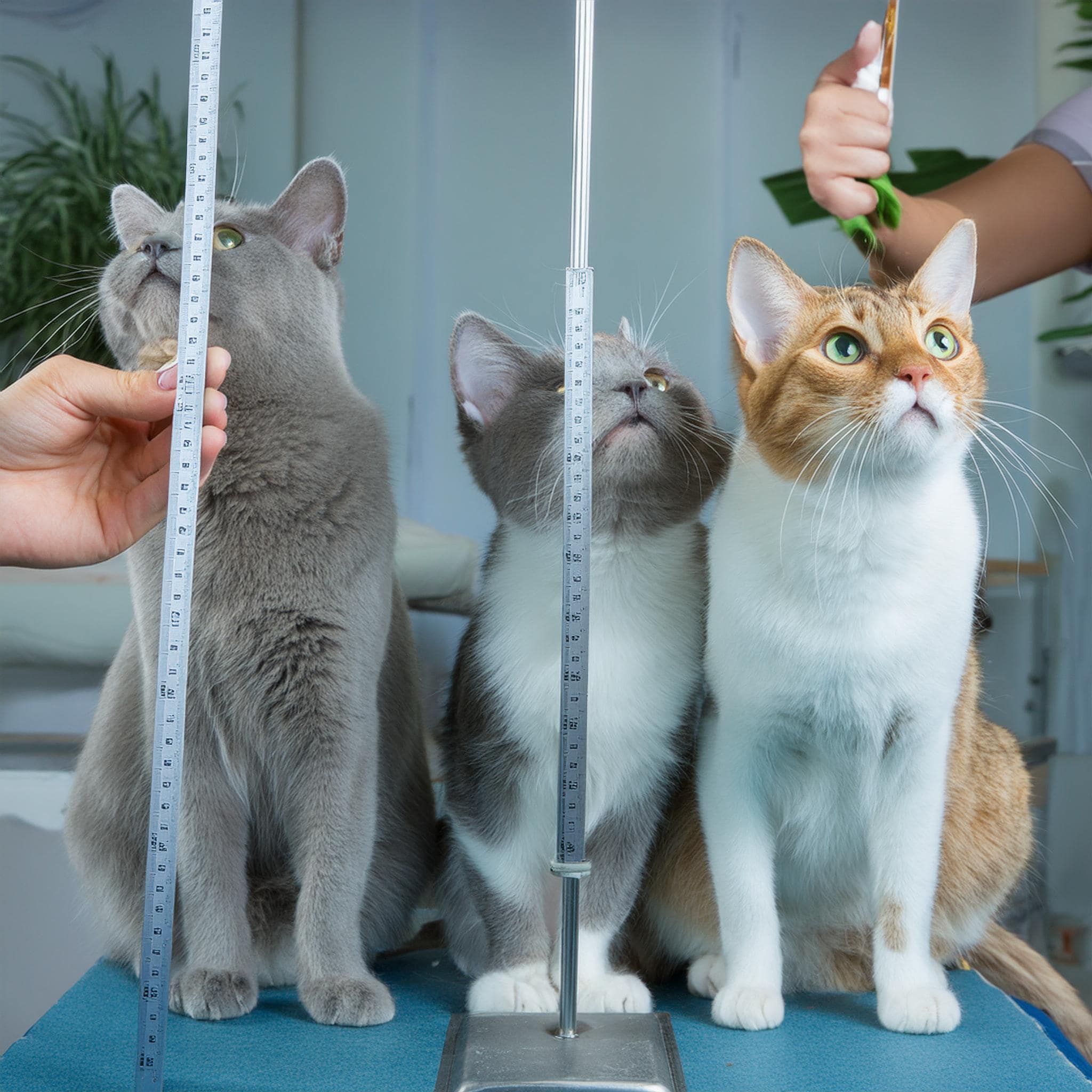{{ article.displayTitle }}
| | {{ 'ml-lesson-number-slides' | message : article.intro.bblockCount }} |
| | {{ 'ml-lesson-number-exercises' | message : article.intro.exerciseCount }} |
| | {{ 'ml-lesson-time-estimation' | message }} |
Catch-Up and Review
Here is a recommended readings before getting started with this lesson.
Study a Data Set About The Lifespan of Cats
Emily and Ignacio love learning about animals. They believe they can make meaningful discoveries by studying data about any animal, beginning with cats. They choose to create a data set, consisting of seven data points, showing the lifespan of cats in their neighborhood. They surveyed their neighbors to get this information.
| Lifespan of Cats (in years) | |||
|---|---|---|---|
| 15 | 11 | 14 | 15 |
| 14 | 17 | 13 | |
Answer the following questions using this data set.
What is a Data Set?
A data set is a collection of values that provides information. These values can be presented in various ways such as in numbers or categories. The values are typically gathered through measurements, surveys, or experiments. Consider a data set that consists of the heights of a group of actors.
| Actor | Height |
|---|---|
| Madzia | 5 ft 4 in. |
| Magda | 5 ft 2 in. |
| Ignacio | 6 ft 1.6 in. |
| Henrik | 5 ft 10 in. |
| Ali | 6 ft 1 in. |
| Diego | 5 ft 2 in. |
| Miłosz | 5 ft 2 in. |
| Paulina | 5 ft 3 in. |
| Aybuke | 5 ft 7 in. |
| Mateusz | 6 ft 1.2 in. |
| Gamze | 5 ft 3 in. |
| Marcin | 5 ft 7 in. |
| Marcial | 5 ft 8 in. |
| Heichi | 5 ft 5 in. |
| Arkadiusz | 5 ft 6 in. |
| Enrique | 5 ft 10.5 in. |
| Aleksandra | 5 ft 4 in. |
| Ashli | 5 ft 4 in. |
| Jordan | 5 ft 5 in. |
| Paula | 5 ft 2 in. |
| MacKenzie | 5 ft 6 in. |
| Joe | 6 ft 1 in. |
| Flavio | 5 ft 10 in. |
| Jeremy | 5 ft 4 in. |
| Umut | 6 ft 1 in. |

What is the Average of a Data Set?
The mean, or the average, of a numerical data set is one of the measures of center. It is defined as the sum of all of the data values in a set divided by the number of values in the set.
Mean=Number of ValuesSum of Values
The following applet calculates the mean of the data set on the number line. Points can be moved to change the data values.

What is the Median of a Data Set?


What is the Mode of a Data Set?

Summarizing a Data Set With a Single Number

Studying Data about the Lifespan of Dogs
Ignacio volunteers at a dog shelter. He asks Emily to help him study a data set he made concerning the lifespan of some of the dogs. The information they gather will help the shelter!

| Lifespan of Dogs (in years) | |||
|---|---|---|---|
| 10 | 21 | 16 | 15 |
| 13 | 15 | 17 | 11 |
Hint
Solution
Substitute values
Add terms
Calculate quotient
- For a set with an odd number of values, the median is the middle value.
- For a set with an even number of values, the median is the mean of the two middle values.
Practice Finding Measures of the Center
Measures of Spread of Data Sets
Similar to the measures of center, there are measures that describe how much the values in a data set differ from each other using only one measure. These measures summarize the spread of the data.
Range
Range is a measure of spread that measures the difference between the maximum and minimum values of the data set.

Quartiles

Interquartile Range
The interquartile range, or IQR, of a data set is a measure of spread that measures the difference between Q3 and Q1, the upper and lower quartiles.
IQR=Q3−Q1
The following applet shows how to find the IQR of different data sets.

Finding the Interquartile Range
First, identify the median of the given data set. Since the number of values is even, the median is the mean of the two middle values.

The median of the data is 6.
The median divides the data into two halves, a lower half and an upper half. For this data, the lower half includes the first six values and the upper half includes the following six.

When there is an odd number of values in the data set, the middle value is excluded from both the lower and upper sets.
Find the first and the third quartile. The first quartile, Q1, is the median of the lower set, while the third, Q3, is the median of the upper set. Here, both quartiles are found the same way the median was found.

Comparing the Weights of Cats and Dogs
 They collected a few more data points and compiled a data set consisting of nine data points for the weights of cats.
They collected a few more data points and compiled a data set consisting of nine data points for the weights of cats.
Hint
Solution
Range for the Weights of Cats
The least and greatest values can be identified without sorting the data values. Note that they can be listed in order if desired.Range for the Weights of Dogs
Apply the same procedure of identifying the greatest and least values for the data set of dogs.Interquartile Range of Cat Weights
Here, it is necessary to order the values from least to greatest. Then identify the median of the given data set. Since the number of values is an odd number, the median is the middle value.

The median of the data is 9. Both the lower and upper halves contain four data values. Therefore, there are two middle values in each half. The median of each half is the mean of the two middle values.

Interquartile Range of Dog Weights
In this case, the data values are ordered from least to greatest and the number of values is an even number. This means that the median is the mean of the two middle values.

The median of the data is 33.5. Both the lower and upper halves contain five data values. Therefore, there is only one middle value in each half.

Five-Number Summary
A five-number summary of a data set consists of the following five values.
These values provide a summary of the central tendency and spread of the data set. The five-number summary is useful for understanding the variability in a data set. When the data set is written in numerical order, the median divides the data set into two halves. The median of the lower half is the first quartile Q1 and the median of the upper half is the third quartile Q3.

Outliers
An outlier is a data point that is significantly different from the other values in the data set. It can be significantly larger or significantly smaller than the others.

Categorical data sometimes also have unusual elements; these can be called outliers as well.

What Does Significantly Different
Mean?
For numerical data, the following definition is one of the several approaches that can be used.
- A data value is an outlier — significantly different from the other values — if it is farther away from the closest quartile than 1.5 times the interquartile range.
Such a value was suggested by the esteemed American mathematician John Tukey. Move the slider in the following applet to see which data point is an outlier.

An Unusual Value in the Data
 Wait a minute! There is something unusual about a data value in the data set for dogs.
Wait a minute! There is something unusual about a data value in the data set for dogs.
Hint
Solution

Finding Range
To find its range, subtract the smallest value from the greatest.Finding Interquartile Range
After excluding the outlier, the number of values decreased by one. There are nine values now, so the median is the middle value.

The median of the data is 32. Both the lower and upper halves contain four data values. Therefore, there are two middle values in each half. The median of each half is the mean of the two middle values.

| Range | IQR | |
|---|---|---|
| With Outliers | 68 | 15 |
| Without Outliers | 44 | 17 |
After removing the outlier from the data, the range decreased from 68 to 44, while the IQR increased from 15 to 17. This example shows that outliers have a bigger impact on the range of values than on the IQR.
Practice Finding Measures of Spread
Measures of spread, such as the range and interquartile range, indicate how much data values varies, while outliers are values that significantly deviate from the rest. Practice calculating these measures for the given data.

Mean Absolute Deviation
The mean absolute deviation (MAD) is a measure of the spread of a data set that measures how much the data elements differ from the mean. The mean absolute deviation is the average distance between each data value and the mean.
Calculating the MAD involves determining the absolute difference between every data point and the mean, followed by averaging these absolute differences. The applet below calculates the mean absolute deviation for the data set on the number line. Move the points around to change the data.
Finding the Mean Absolute Deviation
Substitute values
Add terms
Calculate quotient
Next, calculate the absolute value of the differences between each data value and the mean.
| Data Value | Absolute Value of Difference |
|---|---|
| 82 | ∣82−84∣=2 |
| 85 | ∣85−84∣=1 |
| 90 | ∣90−84∣=6 |
| 75 | ∣75−84∣=9 |
| 95 | ∣95−84∣=11 |
| 85 | ∣85−84∣=1 |
| 90 | ∣90−84∣=6 |
| 70 | ∣70−84∣=14 |
Studying the Mean Absolute Deviation of Cat Heights
 They are most interested in calculating the mean absolute deviation of the cat's heights to better understand how the sizes of the cats vary.
They are most interested in calculating the mean absolute deviation of the cat's heights to better understand how the sizes of the cats vary.
Hint
Start by finding the mean. Then, calculate the distances between the mean and each data value. Finally, find the mean of these distances.
Solution
Begin by recalling what is the mean absolute deviation.
|
Mean Absolute Deviation |
|
An average of how much data values differ from the mean. |
To find the mean absolute deviation, these steps can be followed.
- Find the mean of the data
- Find the distance between each data value and the mean
- Find the average of the distances found in Step 2.
| Data Value | Absolute Value of Difference |
|---|---|
| 9 | ∣9−13∣=4 |
| 9 | ∣9−13∣=4 |
| 12 | ∣12−13∣=1 |
| 15 | ∣15−13∣=2 |
| 14 | ∣14−13∣=1 |
| 11 | ∣11−13∣=2 |
| 14 | ∣14−13∣=1 |
| 15 | ∣15−13∣=2 |
| 15 | ∣15−13∣=2 |
| 10 | ∣10−13∣=3 |
| 16 | ∣16−13∣=3 |
| 16 | ∣16−13∣=3 |
Add terms
Calculate quotient
Round to 1 decimal place(s)
Standard Deviation
sigma— is commonly used to denote the standard deviation. In a given set of data, most of the values fall within one standard deviation of the mean.

Standard deviation shows the variation of data from the mean.
- If the standard deviation is small, it means the values in the data set are close to the mean.
- If the standard deviation is large, it means the values are spread out over a wider range.

Data Values Beyond One Standard Deviation
 Here are the values they are analyzing.
Here are the values they are analyzing.
Hint
First find the mean of the given data set. Then, find the range of the values that are within one standard deviation from the mean.
Solution

The values that are less than 18.8 are 16 and 18, and the values that are greater than 27.2 are 28 and 30. That means the heights outside the range of one standard deviation from the mean are 16, 18, 28, and 30 inches.
Finding The Measures of Center of a Data Set
In this lesson, the measures of center and measures of spread were discussed.
| Measures of Center | Measures of Spread |
|---|---|
| Mean Mode Median |
Range Interquartile Range Mean Absolute Deviation Standard Deviation |


